-
Posts
1,620 -
Joined
-
Last visited
Content Type
News Articles
Tutorials
Forums
Downloads
Everything posted by mrwonko
-

Few questions regarding model textures and npcs
mrwonko replied to Rage's topic in Modding Assistance
I can't imagine the fps going down when you use a remapped texture, unless you were initially using misc_model_static or made the changed texture insanely big. You can create a custom model, but there is absolutely no difference to remapping if you use misc_model. Yes, making an npc play animations is done via script. No, that's not terribly hard. Look for SET_ANIM_BOTH. Yes, making npcs walk in multiplayer is possible via script, but they're way worse at navigating than in sp. They'll need to be able to walk straight to where you point them. Look for target_navgoal and SET_NAVGOAL. -
Yes, I need to write some documentation. It doesn't import animations by default because importing all 30k frames takes forever (I'll have to look into that, too - I might be able to speed it up) so it defaults to importing none of the animations - you don't need them for rigging, after all. You can select whether to import none, a range of or all the frames in the options.
-
As can mono/stereo, depending on whether we're talking about music or "normal" sounds.
-

Yet another topic regarding the execution of cvars.
mrwonko replied to therfiles's topic in Modding Assistance
Sorry, I kinda forgot to report my findings here. In SP all the ICARUS stuff is in the DLL - there's no way for a Proxy DLL to modify anything of that. So not possible via scripting, sorry. -
Sounds like you've choosen the wrong folder during the installation. You've probably got to select the GameData folder - I can't tell for sure though, I've never used 1.3. It's ancient. You could do a search for shaderlist.txt in your Jedi Academy folder - if it's not in GameData/base/shaders, you've likely done something wrong.
-
And the permission. As soon as it's no longer a Jedi Academy mod but a standalone game it won't be long until the Cease & Desists. Better stick to Jedi Academy. Sure, recode jamp.exe à la iojamp, add the option for more fancy graphics effects, but make it still use the original assets. So it still requires Jedi Academy to work. (Until someone redoes all the assets - and especially the animations will be a shitton of work.)
-
They couldn't just've used Quake 3's animation since the file formats are vastly different.
-
There's textures/doomgiver/hyperspace from JK2, maybe that'll do?
-
Award for the easiest modelling tool probably goes to Google Sketchup. Very limited in what you can do with that though...
-
I use Blender myself - since it's free and great - and I learned by doing stuff with it since 2005 or so. Just stick to it. One way is to have a goal - e.g. "Create a custom Oblivion weapon" - and then looking up what you need. Or follow online tutorials on the parts you think you need to know, e.g. "what ways of modelling are there?". I've mostly done the former, though that has the downside of me simply not knowing about features I haven't needed/used yet - maybe there's some faster/easier way to do something I did, for example.
-
Because it's not like there's an entity limit or anything. Oh, wait...
-
You'd simply need a somewhat more elaborate setup of target_activates and target_deactivates - or a script, which has the benefit of keeping the entity count down.
-
Does target_play_music work in mp? Might want to give that a try.
-
There's TORSO_WEAPONIDLE3/TORSO_WEAPONREADY3/BOTH_STAND3IDLE1 for most weapons, TORSO_WEAPONIDLE2/TORSO_WEAPONREADY2 for the pistol, TORSO_WEAPONIDLE10/TORSO_WEAPONREADY10 for thermal detonators and TORSO_RAISEWEAP4/TORSO_WEAPONIDLE4/TORSO_WEAPONREADY4 for zooming with the Disruptor, as well as BOTH_SABERDUAL_STANCE, BOTH_SABERFAST_STANCE, BOT_SABERSLOW_STANCE, and BOTH_SABERSTAFF_STANCE for the lightsaber, as far as I can tell. Not sure about medium saber stance.
-
Doom 3 BFG did, don't know about the normal one. But it doesn't support mods for the original Doom 3. And to make matters worse the original has been removed from Steam when the BFG arrived. Yeah...
-

Damn it Raven: The Collective of JA bugs
mrwonko replied to eezstreet's topic in Jedi Knight General Discussions
Still, that's 14 or so cycles out of what, a couple million? Sure, it's unnecessary, but probably also irrelevant. -

Yet another topic regarding the execution of cvars.
mrwonko replied to therfiles's topic in Modding Assistance
Hmm... if cvar setting is done via trap call, and SP works like MP, it might be possible to have a proxy DLL that forwards most calls to the original jagamex86.dll, except for those you'd like to change. That's pretty advanced stuff... I'll take a look at that, I'm intrigued. -

Yet another topic regarding the execution of cvars.
mrwonko replied to therfiles's topic in Modding Assistance
I've had a brief look at the source. g_ICARUScb.c is of interest - cb = callback, the file contains the vm-specific icarus parts. Don't you think you could modify the Q3_Set and Q3_GetFloat/Q3_GetString functions in there to allow the set()/get() commands in ICARUS to access cvars? e.g. treat everything with a cvar_ prefix as a cvar. -
Version latest
8,109 downloads
This is a plugin for Blender to import and export 3D models from Jedi Academy and Jedi Outcast (Ghoul2 GLM, MD3, etc.) This is a compilation of all my Blender plugins, ported to modern Blender versions 2.64 and above: MD3 Exporter (originally by Xembie, forked a couple of versions ago) ROFF Importer & Exporter ASE Importer & Exporter (specifically for GtkRadiant/Q3Map2 - very simplistic) .map patch exporter - i.e. export as patches GLM/GLA Importer & Exporter and animation.cfg exporter with support for everything, including creation of new playermodels and animations. New version! Check out my GitHub for the latest pre-release, which supports newer Blender versions and addresses various shortcomings. A new JKHub release will follow at some point. A manual is included, make sure to read it if you're having problems. Installation: Go to the Blender User Preferences, select "Install Addon" and select this zip. -
Use a misc_security_panel with a unique "message", add an npc_imperial set to COMMANDER with the same "message", ???, profit.
-

Adding spawn flags in game? (entities)
mrwonko replied to RancorSNP's topic in General Modding Discussions
Use 1.6. -

Adding spawn flags in game? (entities)
mrwonko replied to RancorSNP's topic in General Modding Discussions
So this is about console commands for map (entity) creation in singleplayer? I didn't even know that was possible (beyond npc spawning), but I suggest you simply edit the bsp file (or rather, edit the entity part and do an -onlyents compile). -

Adding spawn flags in game? (entities)
mrwonko replied to RancorSNP's topic in General Modding Discussions
I'm not entirely sure what you're trying to accomplish and what you've tried to accomplish it/how it does not work. You're trying to add new Spawnflags to an entity - like, say, an invincible flag that turns npcs invincible on spawn? And you've done it by editing the part you've quoted there? Are you working in the sourcecode or the mp_entities.def? The latter is necessary to get it to show up in radiant, but you'll also have to code the changes you want in, and the part you've quoted is only the comment describing how it's supposed to work. But just as you can't make a coffee machine make tea by labeling it "tea machine", you can't change a function by changing the comment describing it. I suggest you take a look at how it works - there's lots of entities, after all - or wait for people who know more about the specifics of Jedi Academy coding than me. -
Only thing that sounds suspicious from that list is the script, maybe you could post it. If nothing else helps you can always bisect the map - remove one half, see if the error persists, if not, remove the other - repeat until you've narrowed it down enough.
-
Once again shows that good art design > good graphics. Looks great! (Despite JA's limitations is what I'm saying, not that it's particularily bad tech-wise.)




